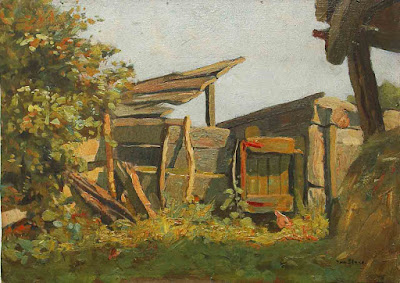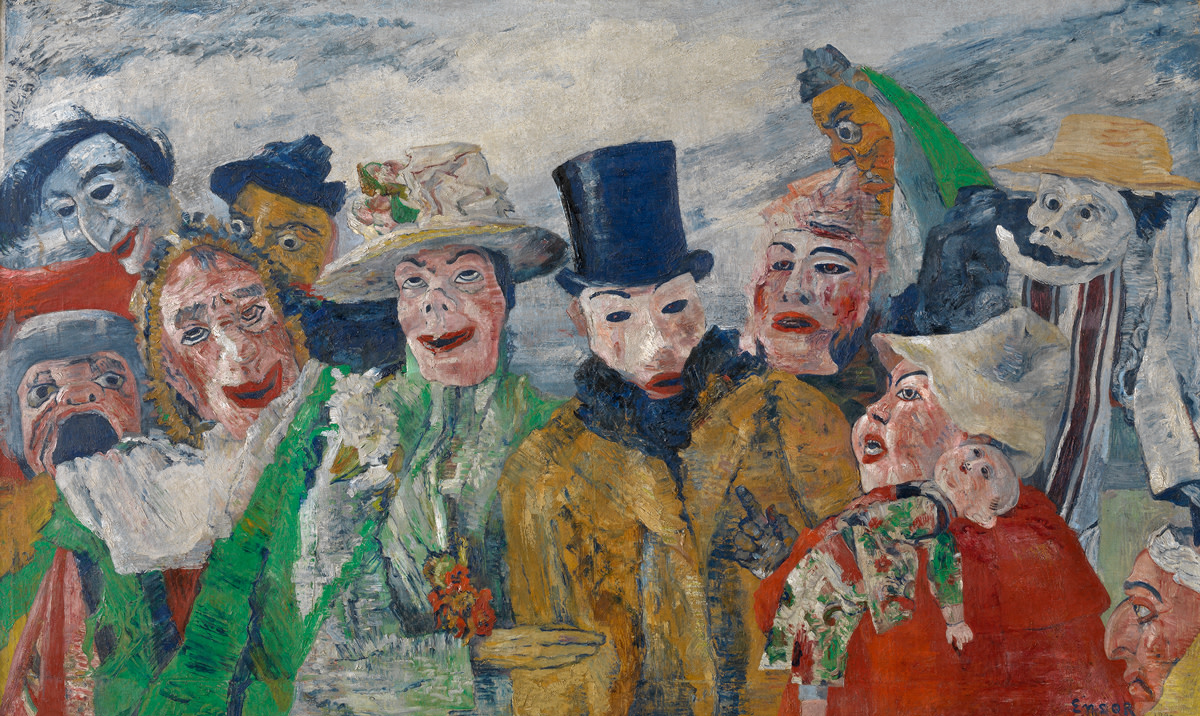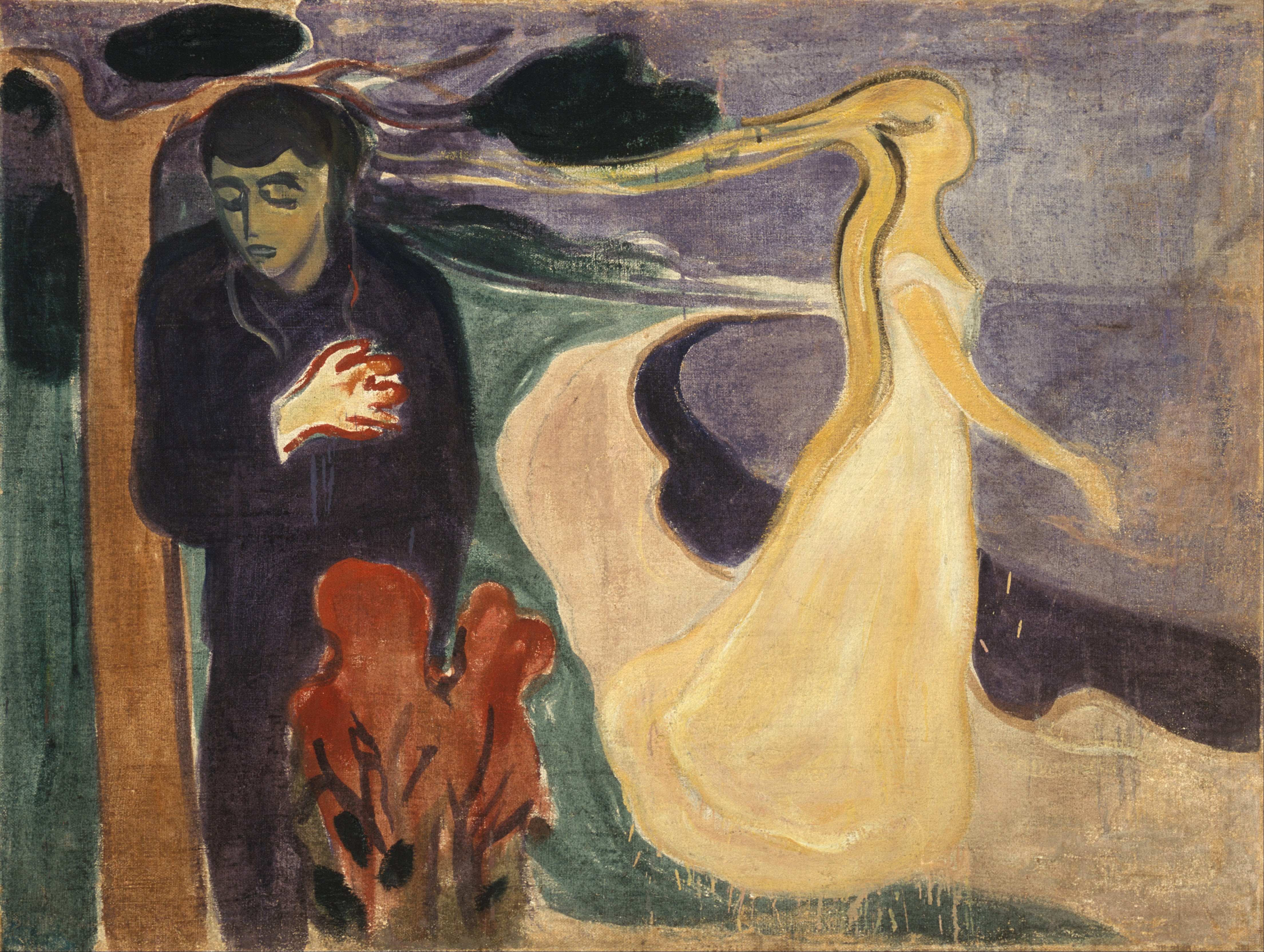 |
Self Portrait, 1918, 35 x 28 cm, from the Jan Sirks website,
maintained by Yosay Briels
|
According to art historian Yosay Briels, Jan Sirks was a Dutch artist. He was born in Rotterdam February 23, 1885. He loved art and theatre from his early childhood. He always wanted to be an actor, but found himself experimenting more and more in art. He went to art school for a short time, but quickly dropped out as he didn't enjoy his instructors' methodologies. He worked at his family business, the Dutch Iron Railway Company, until he found that he finally took an art studio in 1911. Sirks was fascinated with etchings and received so many orders for his work that he had to employ a printer. Sirks was intrigued by spirituality and joined the Theosophical Society. He also became a volunteer medic with the Dutch Land Brigade, where he became deeply affected by the refugees he encountered. He fell in love with his model, pianist Hillegonda Mol, and began a life with her in June 1916. He was soon heavily involved in the avant-garde movement, serving committee roles with The Surf (De Branding) and The Signal (The Bergen School). The last year of World War I was difficult for him due to a stillborn son. However, he and his wife soon had three healthy children. He joined the Acacia Lodge and became a Freemason. He traveled all over Europe, learning more about his craft along the journey. He helped establish the Oasis, an organization dedicated to bringing artists, musicians and writers together. As his life progressed, Sirks became more and more dedicated to social justice. He was deeply disturbed by Hitler's rise to power and the impact of the Nazi party on his many Jewish friends. He decided to take solace in nature and moved to Den Dolder, where he passed away on March 11, 1938 (Briels).
Artistic Stages
1903 - 1911 The Hague School
 | |
| Farm Study, 17 x 25 cm, from the Jan Sirks website, maintained by Yosay Briels |
1911 - 1915 Etchings
 |
| From the Jan Sirks website,maintained by Yosay Briels |
1916 - 1917 Esoteric Phase
 |
| "Vision 2," from the Jan Sirks website,maintained by Yosay Briels |
1918 - 1919 Portrait Series / The Surf (De Branding), Bergen School, German
Impressionism, Dutch Luminisme
 |
| Self-Portrait, Charcoal, 1918, 21 x 15 cm, from the Jan Sirks website, maintained by Yosay Briels |
1921 - 1925 Tonal Contrast
 |
| Pastel Landscape from the Jan Sirks website, maintained by Yosay Briels |
During this period, Sirks was most interested in Japonisme, Expressionism, and color theory (Briels). He continued experimenting with etchings, landscapes and also added animals into his artwork. My favorites from this time are his pastel trees. These were actually the first paintings I noticed from Sirks and the reason I decided to research his life.
1926 - 1938 Change of Palette, Landscapes, Trees, Cityscapes and Mature Phase
 |
| From the Jan Sirks website, maintained by Yosay Briels |
Final Thoughts
Jan Sirks' life and works help me understand that art is a journey, that we learn through experimentation, and that we may make dramatic changes in our style over time.
https://pin.it/opwnxe6yhjnflk
Works Cited
Briels, Yosay. “Jan Sirks Dutch Artist 1885-1938 Realism-Expressionism-Hague School.” Jan Sirks,
2014, jansirks.net/.



